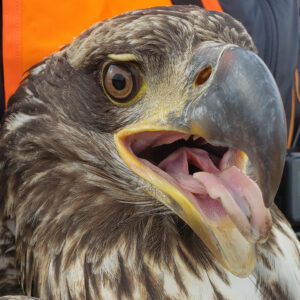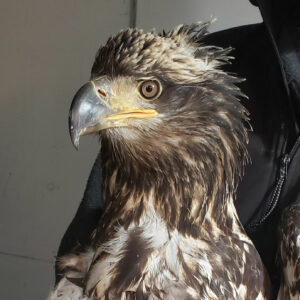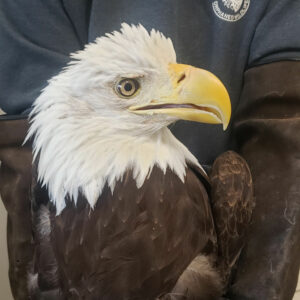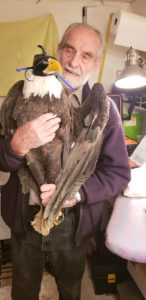This BETA Project, in cooperation with Simon Fraser University, and in Phase 1 is a 10 year introduction to these eagle movements. As different age classes and geographically resident eagles get tagged we hope to formulate additional questions and plan fact based managements recommendations. Is the population still expanding or now declining? Since so many eagle are dying of pesticides and heavy metals can we determine where they are picking up these contaminants? And since electrocution remains the largest local killer of our eagles can we learn something about their local movements that would assist BC Hydro in where to place perches above the killing wires?
Trapping some of our local breeders and some of the thousands of migrants will be a start to our better understanding of the world’s largest gathering of bald eagles. Please support the BETA Project: follow an eagle on its annual journey. If you can contribute financially to the Project please do so. The HWF team has devoted a large portion of our consulting dollars to buying Trackers and our first grant application to Molson Breweries also resulted in a fine support grant. At about $5000.00 cost per Tracker we need your support.
See Donations and Classes of Support for following your favorite bird.
Centre for Wildlife Ecology
Simon Fraser University
ydenberg@sfu.ca
Avian Science and Conservation Centre
McGill University
david.bird@mcgill.ca
Hancock Wildlife Foundation
Surrey, BC 604 761-1025
david@hancockwildlife.org
Director of Research Programs
Surrey, BC
myles@hancockwildlife.org
Bloom Biological, Inc.
Santa Ana, CA
petebloom@bloombiological.com
Coastal Raptors
Hoquiam, WA
danvarland@coastalraptors.org
U.S. Geological Survey
Boise, ID
tkatzner@usgs.gov
Hawk Mountain Sanctuary
Allentown, PA
bildstein@hawkmtn.org
Dept Medicine, UBC
Vancouver, BC
mseear@cw.bc.c
Canadian Wildlife Service
Delta, BC
john.elliott2@mcgill.ca

Executive Summary:
The bald eagle (Haliaetus leucocephalus) is the most conspicuous and now perhaps the most numerous top predator in the Pacific Northwest, and perhaps on the continent. From summer until early winter, many estuaries are occupied by hundreds and in some cases even thousands of eagles. They come to scavenge salmon, but who are these birds and where do they come from? Answering this question in any sort of detail requires that individual birds be tracked over long periods. The difficulties inherent in studying free-living top predators are especially challenging for migratory raptors as they move long distances and spend a lot of time in remote areas, but is becoming possible with the advent of new tracking technologies. Cellular technology allows devices to update frequent batches of telemetry data at considerably low cost compared to satellite devices. If cellular coverage is unavailable, the unit can store data points until it returns to a coverage area. Such a unit would enable bald eagles to be tracked over long periods of time, even in remote areas. We are seeking a total of $200,000 CDN to enable the purchase a number of these units and to cover other ancillary costs of the study.
Context of the project
Top predators have powerful effects on entire ecosystems. This phenomenon is well illustrated by the reintroduction of wolves into Yellowstone National Park, carried out by the US Fish & Wildlife Service in the mid-1990s, 70 years after wolves were exterminated in the park. Following the reintroduction, the population of their primary prey – elk – fell by almost half. This much was to be expected, but the scale and extent of the other effects wolves induced were truly surprising. Gallery forests along streams grew up astonishingly quickly and biodiversity increased, enabling the return of the beaver, absent from Yellowstone since the wolf was exterminated. The dam building activities of these ecosystem engineers soon altered hydrology, which increased nutrient availability that in turn supported higher breeding success by riparian birds, as well as the return of butterfly species not seen in decades.
These effects can be traced back to the fact that elk altered their foraging behavior once there were wolves. Prior to the reintroduction, elk grazed and browsed almost everywhere with near impunity. But afterward they had to become more cautious, and avoided the places that had become most dangerous. Released from grazing and browsing pressure, the vegetation on these places rebounded, which in turn led to the changes listed above. The return of the wolf made Yellowstone a much healthier ecosystem, showcasing how top predators are vital to ecosystem health and functioning. Conservation requires good knowledge of the behavior of top predators to understand whether and how they exert these effects in other ecosystems.
Like those of many other raptors, numbers of bald eagles (Haliaetus leucocephalus) have increased steadily since the 1973 ban on DDT, increasing as much as 10- or 20-fold in various places. On the West coast of British Columbia where we wish to pursue our study, the bald eagle breeding population has skyrocketed. For example, David Hancock, a member of the Bald Eagle Tracking Alliance (BETA), watched his three southern Fraser Valley nesting pairs in the 1960s grow into approximately 500 nesting pairs in his adult lifetime.
The central idea behind the work proposed here is that the population recovery of these raptors can be thought of as a continental-scale analogue of wolf reintroduction into Yellowstone. The ecosystem effects might be as profound, or even more so, than those of Yellowstone’s wolves. Many raptors are migratory, and so extend the effects of their presence on a continental scale. And unlike wolves they are not confined to remote or wilderness areas. Many inhabit rural, suburban and even urban areas.
The annual movements of eagles appear to be more varied and complex than those of peregrines. Many bald eagles breeding on the continent must vacate their breeding territories for a large part of the year. Many of these birds appear to move to coastal sites along the Pacific and Atlantic coasts. But even in parts of the continent where territories could be occupied throughout the year, such as the Strait of Georgia, many territories are abandoned. Data from the BC Coastal Waterbird Survey reveal a distinct annual cycle in numbers in the Strait of Georgia (see Figure 1 below), with a low following the termination of breeding. Anecdotally at least, these eagles are believed to move to salmon spawning streams, perhaps on the central coast. It has further been suggested that they track the geographical progress of salmon spawning populations from north to south, but data are lacking. There is great annual variability in the numbers recorded at any wintering location (Elliott et al. 2011), which suggests that bald eagles are flexible in just where and when they travel.
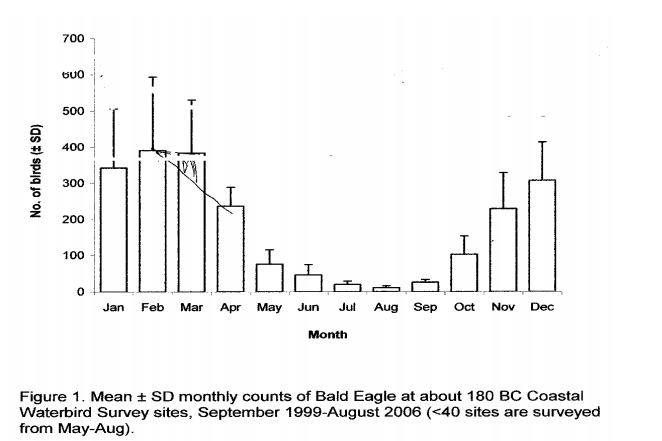
A fuller picture of these movements of bald eagles can be developed just as Worcester & Ydenberg (2008) did for peregrines. This requires two steps. First, we need to assemble the many (dispersed) data available on the numbers of eagles year-round at specific locations. Examples mentioned here (HawkWatch, BC Coastal Waterbird) can be combined to give an overall summary of where and when concentrations occur. This will be very informative. We are already aware of the large gatherings of bald eagles at locations like the Chehalis River Flats during the annual salmon spawning run where as many as 7,000 eagles can be counted all at one time (David Hancock, unpubl. data)!! This may well constitute the largest number of bald eagles seen in one place at one time in all of North America. In the second step, we wish to capture a number of these bald eagles and employ the latest technology to track their movements. This will include both colour-marking and the attachment of transmitters.
The Team Members:
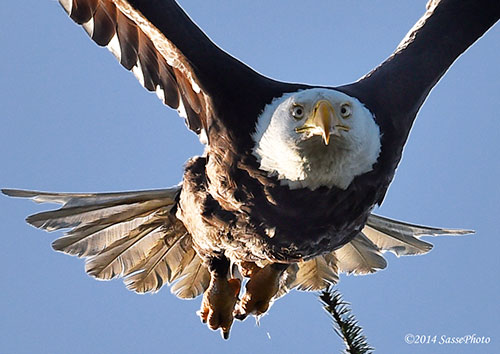 We have assembled a stellar team of researchers to form the Bald Eagle Tracking Alliance to undertake this study, beginning with Dr. Ron Ydenberg, a professor of wildlife ecology at Simon Fraser University in Vancouver, as the academic head of the project who will directly supervise graduate students. Dr. David Bird is a Professor Emeritus of Wildlife Biology at University and an expert on birds of prey, including bald eagles, for over 40 years and a Director of HWF. Mr. David Hancock is the founder and president of the Hancock Wildlife Foundation and has studied bald eagles on the west coast for all of his adult life. Mr. Myles Lamont is a Registered Professional Biologist, Certified Wildlife Biologist, Certified Environmental Professional and Certified Applied Science Technologist. He has over twenty years of direct experience working with various species of threatened and endangered birds. Dr. John Elliott is a senior toxicologist with the Canadian Wildlife Service in Delta,BC who has worked extensively with birds of prey, including bald eagles, in British Columbia. Dr. Pete Bloom has studied birds of prey all of his life and currently runs a California consulting firm which focuses on raptors; he is arguably the world’s most experienced raptor trapper, having live-trapped all of the remaining California condors (Gymnogyps californianus) for the very successful captive-breeding project. Mr. Daniel Varland founded Coastal Raptors, a consulting firm which focuses on raptors in the Northwestern U.S., and he also has extensive experience on trapping and marking birds of prey, including bald eagles. Finally, Dr. Keith Bildstein, the Sarkis Acopian Director of Conservation Science at Hawk Mountain Sanctuary in Pennsylvania, is arguably the world’s leading authority on raptor migration. Our most recent Team member is Dr. Michael Seear, Professor of Pediatrics, Faculty of Medicine, University of British Columbia, a world renowned researcher on childhood brain and behaviour development diseases but recently a devoted raptor enthusiast and a Director of HWF with interests in toxicology, raptor handling and grant writing. It would be very hard to assemble a more experienced, hands-on team of researchers anywhere in the world.
We have assembled a stellar team of researchers to form the Bald Eagle Tracking Alliance to undertake this study, beginning with Dr. Ron Ydenberg, a professor of wildlife ecology at Simon Fraser University in Vancouver, as the academic head of the project who will directly supervise graduate students. Dr. David Bird is a Professor Emeritus of Wildlife Biology at University and an expert on birds of prey, including bald eagles, for over 40 years and a Director of HWF. Mr. David Hancock is the founder and president of the Hancock Wildlife Foundation and has studied bald eagles on the west coast for all of his adult life. Mr. Myles Lamont is a Registered Professional Biologist, Certified Wildlife Biologist, Certified Environmental Professional and Certified Applied Science Technologist. He has over twenty years of direct experience working with various species of threatened and endangered birds. Dr. John Elliott is a senior toxicologist with the Canadian Wildlife Service in Delta,BC who has worked extensively with birds of prey, including bald eagles, in British Columbia. Dr. Pete Bloom has studied birds of prey all of his life and currently runs a California consulting firm which focuses on raptors; he is arguably the world’s most experienced raptor trapper, having live-trapped all of the remaining California condors (Gymnogyps californianus) for the very successful captive-breeding project. Mr. Daniel Varland founded Coastal Raptors, a consulting firm which focuses on raptors in the Northwestern U.S., and he also has extensive experience on trapping and marking birds of prey, including bald eagles. Finally, Dr. Keith Bildstein, the Sarkis Acopian Director of Conservation Science at Hawk Mountain Sanctuary in Pennsylvania, is arguably the world’s leading authority on raptor migration. Our most recent Team member is Dr. Michael Seear, Professor of Pediatrics, Faculty of Medicine, University of British Columbia, a world renowned researcher on childhood brain and behaviour development diseases but recently a devoted raptor enthusiast and a Director of HWF with interests in toxicology, raptor handling and grant writing. It would be very hard to assemble a more experienced, hands-on team of researchers anywhere in the world.
Materials and Methods:
Using the expertise of Dr. Bloom and Mr. Varland, we will employ several techniques to live-capture bald eagles, depending on the location and numbers of birds. In locations of large gatherings of eagles, we have the option of using cannon nets, walk-in traps or bow nets.
To allow us to identify individual eagles, we expect to place aluminum leg-bands on each captured bird. A number of birds will be colour-marked on the head or tail with either dyes or plastic patagial tags to allow us to tap into the extensive web-camera network operated by the Hancock Wildlife Foundation, i.e. literally thousands of enthusiasts who use their computers to watch nesting bald eagles on a daily basis.
The most important method of tracking the eagles’ movements entails the use of the most modern technology developed to date —- cell phone tower tracking. For example, the CTT-2040 is a battery-powered GPS-GSM telemetry system. There are also solar powered units. The battery-powered tracker is limited in transmission capacity, but it can operate in circumstances where solar recharge is not possible. The CTT-2040 is a backpack style unit that can be attached with teflon ribbon. Weights are available from 40g-60g. The device is designed for operation over long periods of time, and can operate at different sample rates depending on defined geofences. Cellular technology allows the device to update frequent batches of telemetry data at considerably lower cost compared to satellite devices. For example, a satellite-tracking transmitter can cost $3,000 plus an additional $7,000 in actual tracking costs for a year. A cell-tracking transmitter has a one-time price of $3,000, but very low tracking costs. If cellular coverage is unavailable, the unit can store data points until it returns to a coverage area. Such a unit would enable bald eagles to be tracked over long periods of time, even in remote areas.
Please note that any handling of the eagles will be done according to the guidelines and under permit of the Canadian Council on Animal Care awarded to Dr. Ydenberg at Simon Fraser University.
We are seeking a graduate student or two to work directly under Dr. Ydenberg at Simon Fraser University. The student’s living costs will be covered by scholarships, teaching assistantships, and other university-based sources of funds.
As for research costs, the main need is the purchase of cell-tracking transmitters from Cellular Tracking Technologies. Obviously, we would like to affix these transmitters to as many bald eagles as we can capture to a maximum of 50 birds. This comprises a price tag of $150,000.
We also require funds for ancillary costs for the graduate students such as vehicle and boat rental and fuel, computer analyses, colour-marking materials, food and lodging while on the road. We expect these costs to be roughly $50,000.
For a total of $200,000 CDN, we should be able to get the project off the ground.
Socio-Economic Benefits:
1) Along with the grizzly bear and the cougar, the bald eagle has become a top predator on the West Coast of North America. Knowing more about its ecology and movements will serve to enhance our efforts to manage their populations;
2) The bald eagle is the official bird of the U.S. and a number of our team members are based in the U.S.;
3) The salmon population are extremely important to the tourism economy of both Canada and the U.S. and bald eagles are a critical component of their ecology. Knowing more about the movements of these eagles will allow us to better understand the salmon fisheries;
4) Bald eagles play an important role in the culture of the First Nations in both Canada and the U.S. and any knowledge accrued during this study will be important to them;
5) Bald eagles have become a major part of the tourism industry in British Columbia, Alaska, California, and the Pacific Northwest of the U.S.; knowing the annual movements of bald eagles will help us to better manage them for this industry;
6) In some places, bald eagles have become regarded as a nuisance species; for example, nesting on hydro towers, nesting in close proximity to humans in residential areas of towns and cities, and nesting in pipeline right-a-ways have to led to conflict between humans and the eagles. Knowing more about their movements will enhance our abilities to manage these situations.
7) This long-term project will serve to train a number of graduate students over the years.
8) This project will serve to unite a number of highly qualified biologists in both Canada and the U.S. in a common purpose – to better understand the movements of a top predator in North America.
9) This project will facilitate the collaboration of university professors, non-academic professionals, and industry.
10) This project is fully supported by the Hancock Wildlife Foundation and the Foundation hereby seeks financial support. This BETA Project has evolved over the past years from discussions with Dr. David Bird and myself and with discussions with the Bird Specialist of the Ministry of Environment as a way to better understand where the world’s largest gathering of bald eagles comes from and where our lower Fraser Valley huge breeding population and their offspring disappear to on migration. Housing the world’s largest population of bald eagles necessitates some responsibility to understand more about them – and what challenges they face going and coming from our area.
David Hancock
Overview of the travels of the eagles we’ve tagged since beginning the project in February 2018:
Click here to meet (and adopt) the eagles we’re currently tracking.
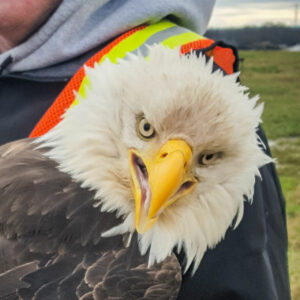
BACA01 (tracked 2/9/18 – 3/28/19)
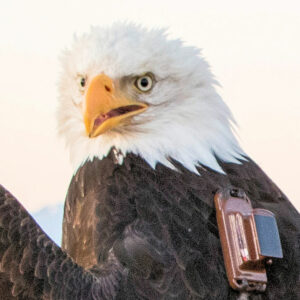
BACA02 (tracked 2/11/18 – 1/5/21)
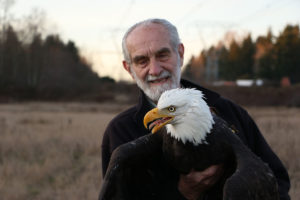
BACA03/Croydon Sr (tracked 12/4/18 – 6/24/23)
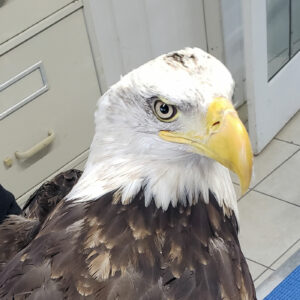
BETA02 (tracked 3/19/19 – 1/15/20)
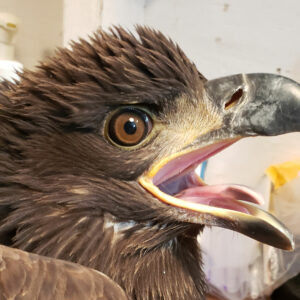
BETA03 (tracked since 11/26/20)
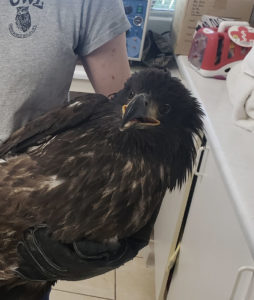
BETA04/Loki (tracked since 7/17/20)
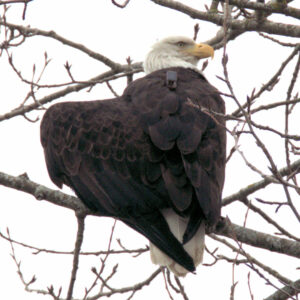
TERF01 (tracked 2/23/18 – 9/19/18)
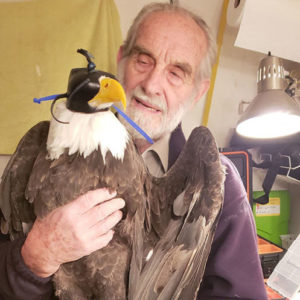
TERF02 (tracked 12/12/18 – 3/26/22)
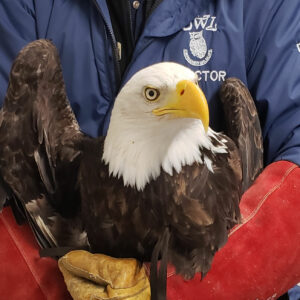
TERF03 (tracked 1/4/19 – 7/5/20)
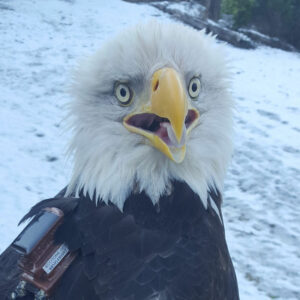
TERF04 (tracked 2/18/18 – 6/26/19)
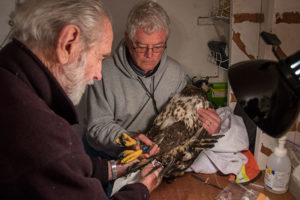
TERF05 (tracked 2/14/18 – 6/12/18)
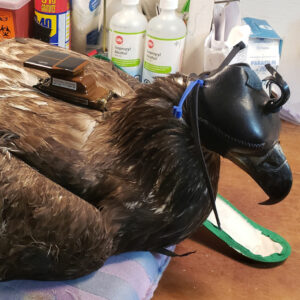
TERF06 (tracked since 11/29/20)
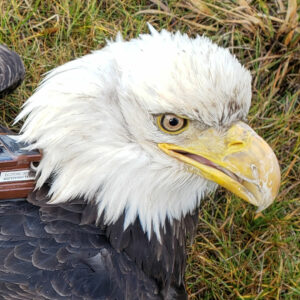
TERF07/Arctic Gal (tracked since 12/12/20)
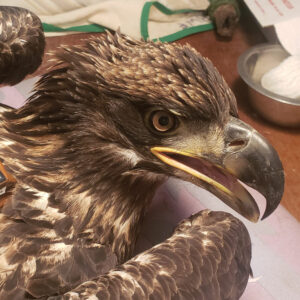
TERF08 (tracked since 12/6/20)
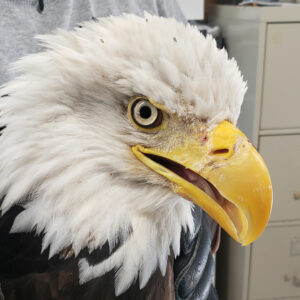
TERF09 (tracked 1/15/21-6/30/21)
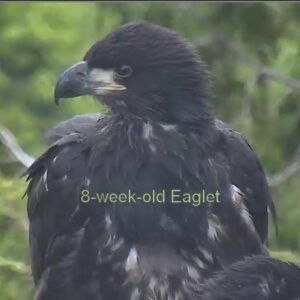
TERF10/Parksville (tracked since 6/7/21)
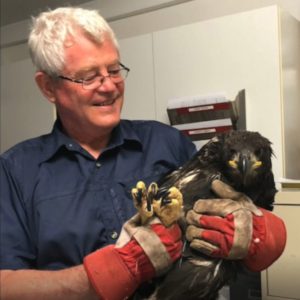
TERF11/Vanier Park (tracked since 7/16/21)
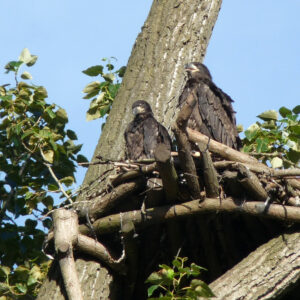
TERF12/Hastings (tracked since 7/28/21)
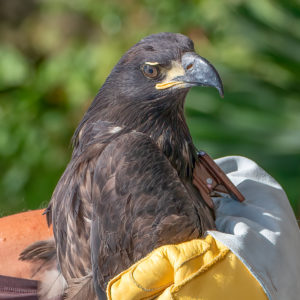
TERF13/Pixel (tracked since 8/4/21)
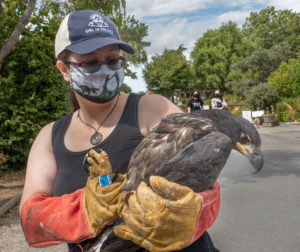
TERF14/Jpeg (tracked 8/4/21 – 1/3/22)
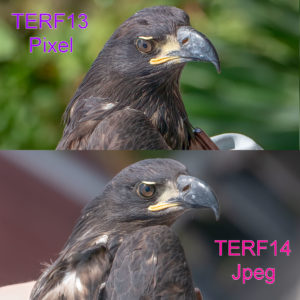
TERF13+TERF14
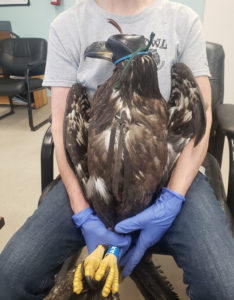
TERF15/Croydon Jr (tracked 8/18/21 – 8/2/22)

TERF15b (tracked since 2/19/24)

TERF16/TEUS03
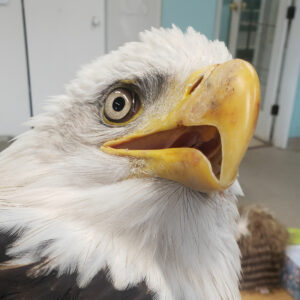
TERF17 (tracked 11/4/21-5/10/23)
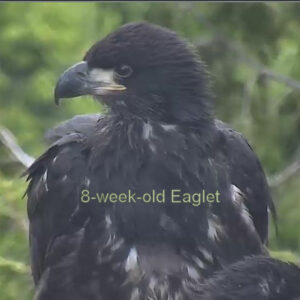
TERF17x (tracked 6/17/23 – 8/3/23)

TERF17a (tracked since 2/19/24)
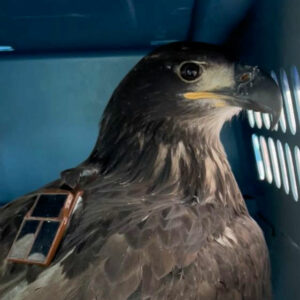
TERF24 (tracked since 1/12/2023)
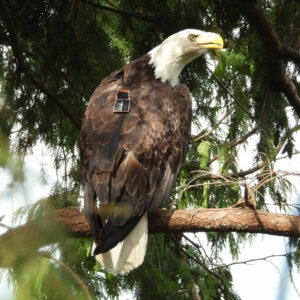
TERF26/Annie (tracked since 7/26/22)
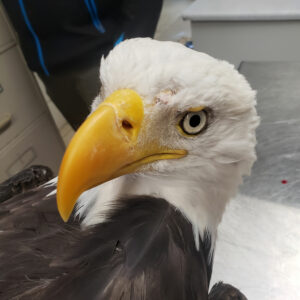
TERF27 (tracked 12/2/22 – 7/16/23)


